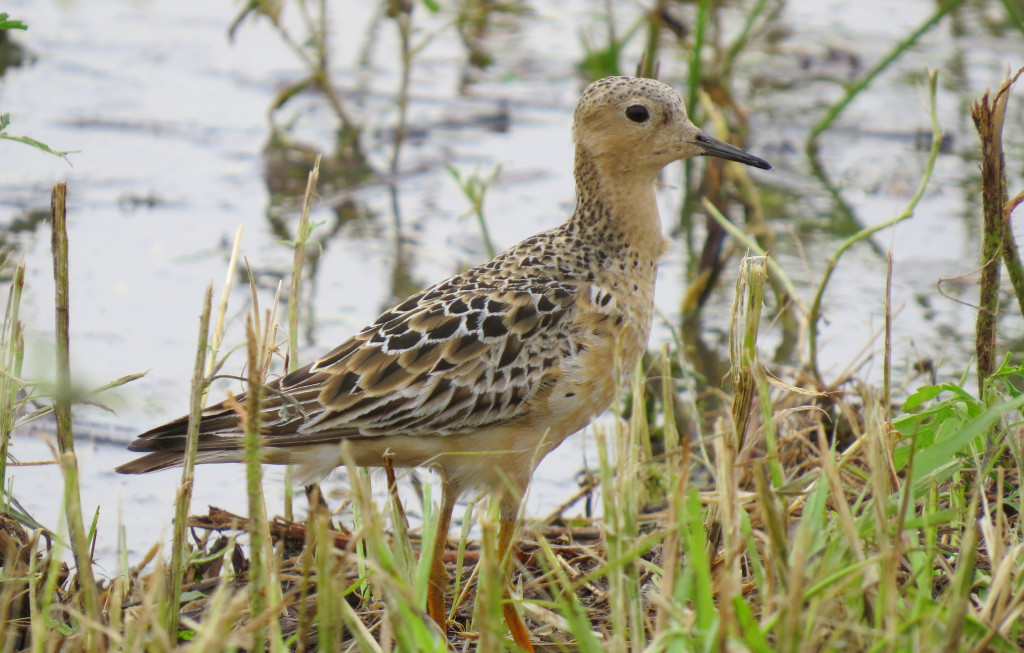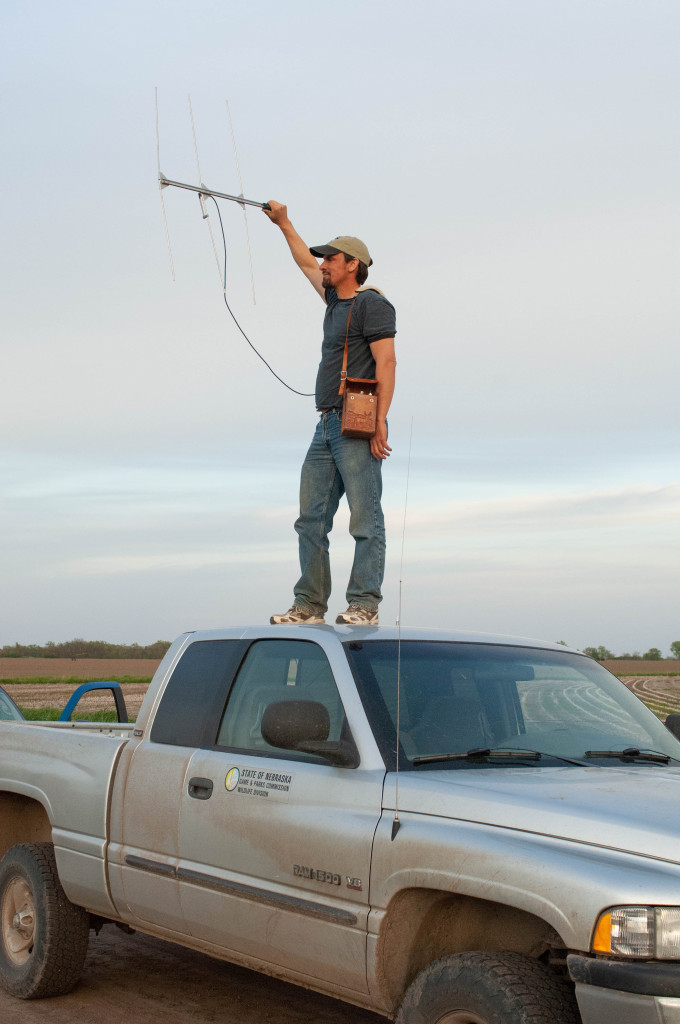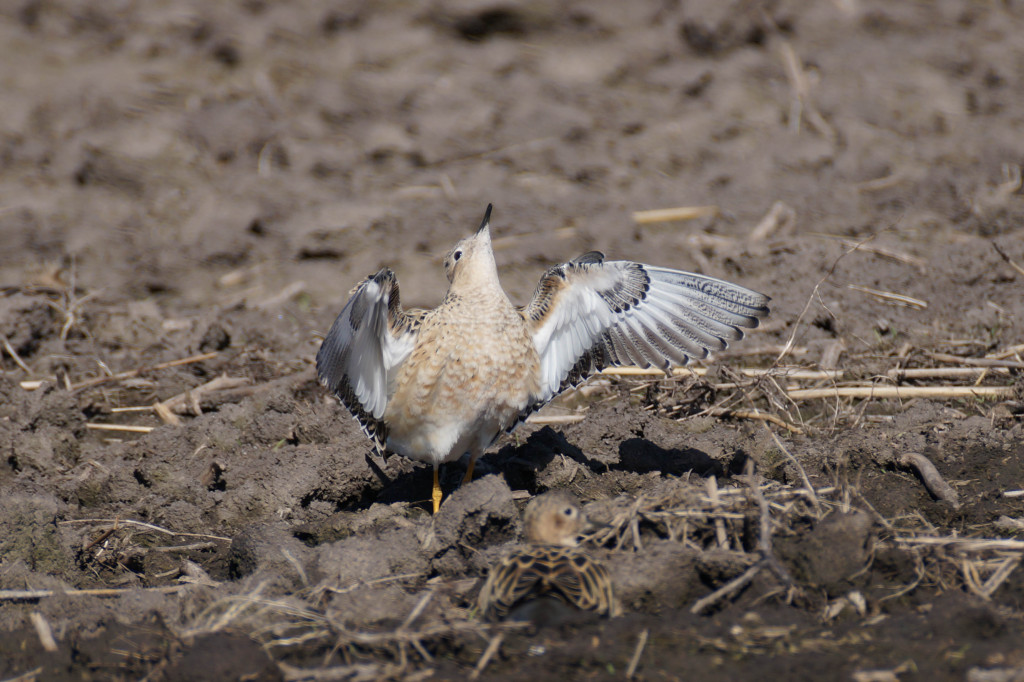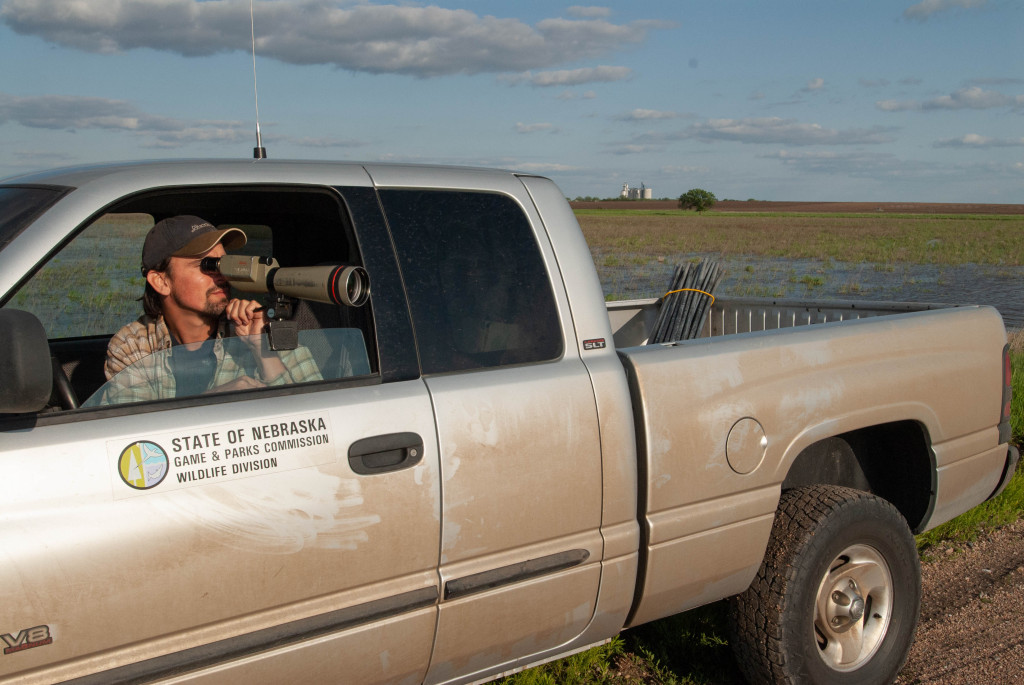At-risk Species Spotlight is a monthly blog post that highlights one Nebraska animal that is at-risk of extinction, with the goal of bringing awareness to the incredible diversity of wildlife we have in the state and their conservation needs and efforts as outlined in the Nebraska Natural Legacy Project.
Enlarge

Photo by Joel Jorgensen
By Olivia DaRugna, Watchable Wildlife Biologist
The inconspicuous, pale-brown, buff-breasted sandpipers (Calidris subruficollis), or “buffies” as some like to call them, are one of the more than 30 shorebird species that stopover in Nebraska during their spring migration. Their round head, large eyes and short, dark bill give them dove-like facial features, whereas the long, pointed wings and yellow legs give them a delicate appearance.
In comparison to other shorebird species, buffies rely heavily on the fields and wetlands of the eastern Rainwater Basin. In fact, 90 percent of the world’s population of buff-breasted sandpipers migrate through Nebraska, stopping in fields and wetlands to rest and refuel before continuing on their long journey from wintering grounds in South America to their breeding grounds in the Arctic tundra. Often, their stay is brief — sometimes as short as 24 hours — which gives them just enough time to rest, bathe and socialize before continuing north.
Conservation
By the 1920s, populations of buff-breasted sandpipers were greatly reduced due to unregulated hunting, overgrazing and loss of habitat. Their population still faces many risks today, including alterations to their habitats, exposure to agricultural chemicals, energy development and climate change. In Nebraska, they are listed as a Tier I Species of Greatest Conservation Need, listed as state imperiled in the Nebraska Natural Legacy Project.
According to Birds of Nebraska – Online, the large concentration of buff-breasted sandpipers occurring in Nebraska was unknown until a farmer in York County published his observations in 1978 of several hundred individuals while working in his field in the spring. After this initial discovery, more research examined the buff-breasted sandpipers’ use of stopover sites in the Rainwater Basin, including the first quantified density estimate in 2004-2005 by Joel Jorgensen, a graduate student at the University of Nebraska at Omaha at the time. The results from this research boosted the global estimate of this species from 15,000 to 56,000 individuals (read more about the research here).

During the spring migrations in 2006-2008, Jorgensen, John McCarty and LaReesa Wolfenbarger, professors at UNO, and others used radio telemetry to understand the species length of stay in the Rainwater Basin and to understand how important this area was for resting, foraging and replenishing fat for the birds’ continued migration north. They found turnover was high with birds typically staying only 24-48 hours, just enough time to bathe, preen, socialize and forage before flying north. These research projects provided the basis for identifying the Rainwater Basin as a Landscape of Hemispheric Importance by the Western Hemisphere Shorebird Reserve Network.
Learn more about this research here or watch this enjoyable The Buff-breasted Sandpiper Show about the research.
Observation Tips
The peak time to see buffies in Nebraska is May 9-18. Without a viewing scope, they can be difficult to distinguish from other shorebirds. However, they have several unique qualities that make them stand out among the crowd. Unlike many shorebirds, buffies forage in dry agricultural fields and prefer fields with soybean stubble from the previous growing season.
Although spotting buffies in fields can be difficult as they blend in well with the brown, bare ground, watch for flashes of white from their underwing as they practice their courtship displays, which involve tilting their head toward the sky, puffing out their chest and raising their wings as though they are receiving a standing ovation after a performance.

Buffies are unique among shorebirds in North America because they have a lek mating system, similar to prairie-chickens. A lek is a location where males gather to perform courtship displays to attract a mate. Although buffies are just stopping briefly in Nebraska, they waste no time trying to perfect their performance before reaching their breeding grounds in the Arctic tundra, so be on the lookout for these displays from buffies on migration.
The Rainwater Basin has numerous public access sites, including wildlife management areas and Waterfowl Production Areas, with some of the best viewing locations featured on the Nebraska Birding Guide map. Wetland conditions vary each year in the Rainwater Basin, and shorebirds can be a bit picky on where they decide to rest. For the best viewing opportunities, visit many sites until you find the site that has the most shorebirds. Buffies are most likely to occur at sites in the eastern third of the Rainwater Basins, foraging in dry fields or bathing in wetlands like those at North Lake Basin in Seward County. Buffies also make brief daily trips to wetlands during the late afternoon or early evening, especially on warm, sunny days.
Targeting wetlands areas at appropriate times can also be a good strategy to find the species. Check out the Rainwater Basin Joint Venture’s recommended driving tour and avoid driving on minimum maintenance roads after rain. This year, many of the Rainwater Basin wetlands are dry from the drought, so shorebirds may not be as numerous as they are in more favorable years.

As always, have fun when you go shorebirding! Although shorebirds may seem intimidating to identify, don’t fret. It takes time and practice to learn how to identify the different species. If you have access to or can borrow a scope, they can be very helpful when looking at these beautiful birds and their subtle characteristics. Better yet, go birding with someone who is familiar with shorebirds to glean tips. Check out the Nebraska Ornithologists’ Union to connect with birders across the state.
Most of all, enjoy the opportunity to witness this brief stint in the shorebird’s long migrations and their unique behaviors. After all, not many people get to enjoy the courtship displays of the buffies, because they are most often performed on high Arctic breeding grounds.
The Nebraska Wildlife Conservation Fund supported some of the buff-breasted sandpiper research. If you would like to help support research efforts of at-risk species, please consider donating to the Nebraska Wildlife Conservation Fund.
The post At-Risk Species Spotlight – Buff-Breasted Sandpiper appeared first on Nebraskaland Magazine.
















